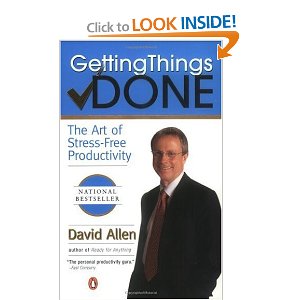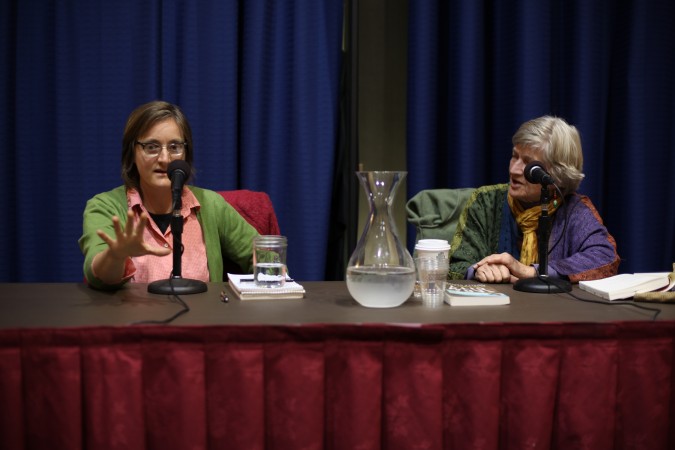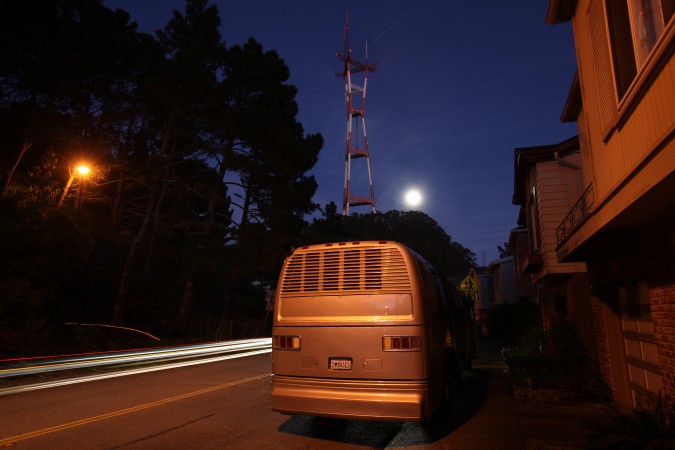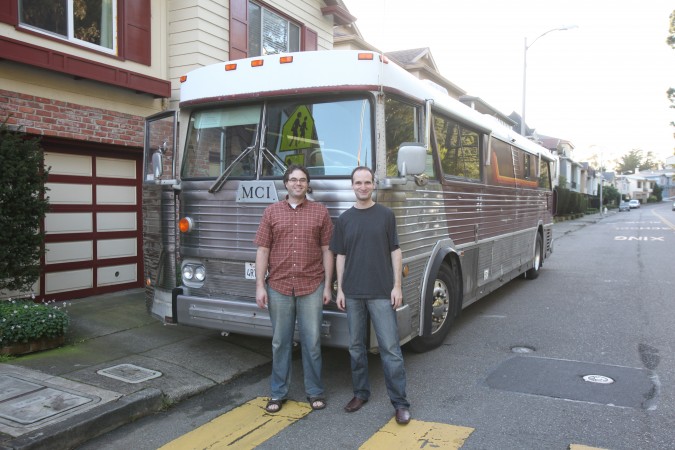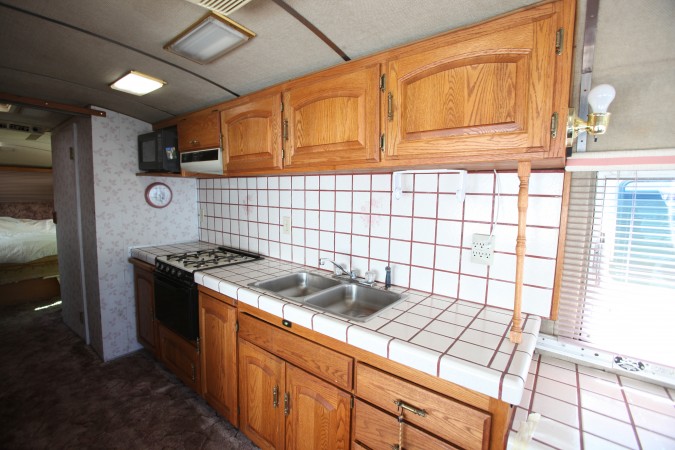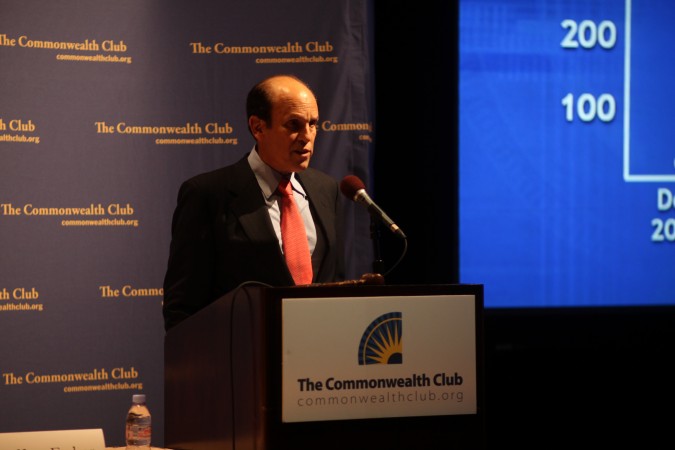Archive for January, 2011
I welded for the first time
Yesterday, January 30th, 2011, I took a class in TIG welding at TechShop in San Francisco, California. This was the first time I have done any kind of welding. The class was short, at under two hours, so all we had time to learn to do was prepare our torches and practice welding a bead on a blank piece of common steel. Even though this may not seem like anything, it eliminated my fear of arc welding. What astonished me is how quiet TIG welding is. It’s nothing like MIG welding that produces an intense and somewhat nerve wracking ‘welding’ type sound.
TechShop has gotten some nice press, and they had some nice flyers out at the front desk. Here’s an article from CNNmoney.com entitled TechShop: A blowtorch-filled paradise for inventors. Here’s an article from the San Francisco Chronicle entitled Inventor’s need for tools sparked TechShop.
I’m now going to sign up for the aluminum TIG welding class.
Can a large roll of dental floss help you retire more comfortably?
In a recent post, I complained about the very high price of blank label stock for ‘cheap’ handheld label makers.
I concluded that the smart thing to do is use a computer to compose the labels, and print on tractor fed labels with an old-school dot matrix printer. The price differential is astounding. It costs about 25 cents per label to use a ‘cheap” handheld label maker. It costs about 1/2 cent per label to use a computer and dot matrix printer. I decided to use a 10 cent pen to handwrite headings on my manilla file folders, and skip both of the above options.
This crazy pricing for labels made me think of another example of crazy pricing for an even more commonly used product — dental floss.
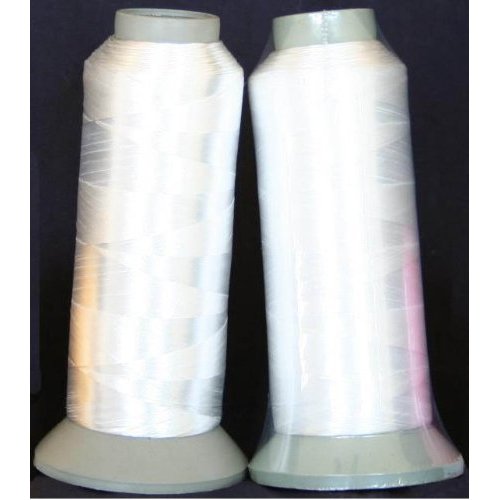
10,000 meters of white sewing thread for $10.45. If this were dental floss, the price would be nearly $300, but why?
Why does dental floss cost about 2.5 cents a foot in retail quantities? While it’s not the same thing, I can buy 10,000 meters of white sewing thread for $10.45, or roughly 1/10th of a cent per foot – about 1/25th the price.
Dental floss is not sewing thread, so floss probably costs more to make. For the sake of argument, let’s agree it costs twice as much as sewing thread to make. That should mean someone should be able to sell it for 2/10th of a cent per foot
Now, if I could just find a source for a spool of dental floss the size of commonly available large spools of sewing thread, I’d be thrilled.
Such a roll of dental floss would probably last for 5 years. It’s simply crazy that something everyone in the world should be using daily can only be bought in tiny little rolls that costs dollars for a few dozen yards. The price per inch is outrageous compared to bulk sewing thread like you see in dry cleaners on their industrial sewing machines.
If there were a facial tissue box sized roll of dental floss, it could be housed in a pretty box the size of those covers they make for facial tissue boxes. These boxes could have a hinged lid and could become an attractive bathroom accessory in every house in the developed world. A progressive company with real manufacturing connections should source the dental floss and make the decorative boxes. I’m thinking Ikea or Costco should take this project on.
I’ve read that each dollar one can take out of ones monthly budget, if saved and invested properly, turns into $700 at retirement! This country has a huge problem with people not having enough savings for retirement. If we could just stop fritering away money on overpriced essentials, we could collectively save enough for retirement, with no reduction in standard of living. Think how convenient it would be to buy dental floss twice a decade instead of once a month. Dental floss doesn’t go bad and you need it constantly. Why buy in tiny quantities when huge bulk quantities are still small in size.
Somehow Costco got us to buy dozens of rolls of toilet paper at once. I’ve read that toilet paper is the best selling product at Costco. I think some company can get us to buy a lot of dental floss at once as well. Who will it be?
The above thinking can be easily applied to dozens of household essentials we’ve been trained to buy in tiny packages. Why can I buy a gallon of liquid handsoap, but I can’t buy a gallon of gel underarm deodorant? I’m pretty sure deodorant doesn’t spoil, and if there were a way to refill the 3 ounce packages it’s now exclusively sold in, that plastic dispenser might get used for years instead of weeks. I haven’t done a rigorous analysis, but I suspect that if one were to alter how one buys necessities as described here that one could retire with at least a quarter million additional ‘free’ dollars, provided one started buying in bulk at age 18 and wisely invested the savings until age 67. Anybody want to run some numbers? Maybe there’s an online company to be started here where the huge waste of household essentials in tiny packages can be wrung from the system?
In a future article, I’ll get started on why we might be better off requiring the installation of bidets in all home bathrooms. Care to guess why?
Label makers cost a fortune to use
I’ve been reading the famous book Getting Things Done by David Allen. I’m trying to get more organized so I can get seriously productive again.
Allen advises getting a handheld label maker and using it freely to label manilla folders, which he advises using in great quantity. He disapproves of hanging file folders, and I see why, as I just removed all of them from my fire proof file cabinet, which I’ve moved right beside my desk. I now have lots of empty space, since manilla folders take so little of it. It’s a simple piece of advice, and it’s advice well worth taking, as I can buy 100 manilla file folders for $5.99. Hanging file folders are also $5.99 a box, but the box only contains 25 folders. So I save space and money.
Amazon has dozens of models of label makers for sale. They start at about $20. That I can deal with. What I can’t begin to fathom is how costly they are to use. They use cartridges of tape that cost about $25 each at Office Depot (less at Amazon). This would be OK if you could get a thousand labels out of a cartridge, but the cartridges only contain 26 feet of tape, or about 77 labels! After sales tax, this 1/2″ wide tape costs over a dollar a foot! So to label a file folder it takes 3″, or $.25 worth of tape. But the folder itself only costs $.06. So the label, which is tiny, costs 400% more than the folder, which contains far, far more material than the label.
This is robbery similar to that practiced by ink jet printer makers, which sell the ink at thousands of dollars a gallon. I understand the label makers are probably sold at a slight loss, but it’s not fair to make up for that loss on the first roll of tape purchased. I would much prefer to spend $150 for the label maker but have it include a 1,000 foot roll of tape that might last for years. Yes, this tape is probably more than just paper and glue, since these printers use a thermal technology to print. But so do cheap fax machines, and I can buy a roll of thermal fax paper that contains the equivalent of thousands of inches of 1/2″ wide labels for a pitance. Look at the size of the thermally printed receipts retailers routinely give out these days. My grocery store gives me a receipt a couple of feet long by 3″ wide. If that had been printed on a label maker, the receipt would cost tens of dollars to print in consumables.
I headed over to the part of the store that sells file folder labels by the letter sized sheet. There the price per label was about 3.5 cents per label instead of 25 cents. Still a fortune compared to white copy paper at $.0001 per label sized piece of paper.
One truly cost effective way to print nice labels is to go back to dot matrix printing, which lets you print one label at a time. One can buy a box of 5,000 5/8″ x 2 3/4″ white labels for $22.54, or $.0045 per label, less than half a penny per label. That’s more like it. I found a USB to parallel printer cable on Amazon for just $9.99. Now all I need is a dot matrix printer, easily found on Craigslist used for $25 – $50. I can set up a Word document to the size of label and just hit print, and one label should be printed out, not wasting anything. The big pain is that I would have another printer junking up my office. I already have an inkject scanner/fax/printer and a large black and white laser printer for economical printing. But I do have a nice Ikea cabinet I keep the printers in, and there is room in there for a small dot matrix printer. So this could be done for about $100, and I would never have to buy labels again, provided the adhesive didn’t dry out. I would probably have to throw out the unused labels every five years or so, but even so, my cost for essentially unlimited labels going forward would be less than $5 per year. Contrast that with potentially $5 per week with a ‘cheap’ label maker.
For now, I have decided to use a 10 cent ball point pen to hand write on my new manilla file folders. I like my handwriting, and my file cabinet is now neat, organized and handwritten, which is just great for now.
I met Novella Carpenter this evening at The Commonwealth Club of California
As I promised last month I attended this evening the talk called ‘Growing Food and Wisdom’ given by Novella Carpenter and Joan Gussow. This fascinating talk was held at The Commonwealth Club of California at their San Francisco office on Market Street.
Using the audience microphone I got to ask Carpenter where to start on my urban homestead household I’m now forming. Both Carpenter and Gussow gave detailed answers. Carpenter said to lay down a thick bed of animal manure based compost… several inches thick, before I begin planting. Gussow recommended not digging up everything in the yard, but advised just cutting it back down to the ground. Then she advised mulching with cardboard or commercial mulch and then digging through the mulch to do plantings in the essentially unturned soil. She said it would not be good to turn over the entire garden, as she said that would encourage lots of weeds to grow and cause a lot of needless work.
I am going to ask an audience microphone question at each event I attend at the Commonwealth Club from now on, as an amazing thing happened after the presentation. A nice woman started asking me about my urban homestead plans, and we got to talking. It turns out she’s looking to move and said she’d like to see the place to possibly move in herself. She has raised chickens and studied permaculture, and by her presence at tonight’s talk, it’s clear she has her heart in the right place for the crazy experiment I’m about to embark on. I hope she contacts me, as it seemed like a good fit. I have 2 remaining rooms, so there’s still hope if you’re interested in trying the urban farming life in the middle of a big, cosmopolitan city.
After the talk I introduced myself to Carpenter and told her of my desire to raise miniature dairy goats for milk. She said to start with chickens, as she said goats take more work. She pitched the goat raising class she teaches, which she said is full for now but will have slots next year, which is about when I predict I’ll be ready for goats. I am going to really try to get the aquaponics system and the chickens going this year, and that’s probably enough to get us started on the road to food self-sufficiency. I’m thrilled I will be able to take a class in goat raising from Carpenter herself for just $30. Sounds like the deal of next year.
I met some of Carpenter’s friends as well, including a nice woman who attends a writers workshop with her. It was inspiring to see Carpenter’s friends greet her, as I could tell they are extremely fond of her. In Farm City, one gathers she has great friends, and I confirmed that impression tonight.
I read Carpenter’s book Farm City last year, and it’s one of my favorite books. It was so heart warming and funny and inspiring. I told her that Farm City and Michael Pollan’s The Omnivore’s Dilemma are the two books that last year changed my life to my current super healthy eating habits, which I credit with my particularly good physical health and height appropriate weight. I weighed 25 pounds more a year ago than I do today, which was not overweight, but getting there. It turns out Carpenter and Pollan both studied together in college.
Farm City details Carpenter’s life in a gritty section of Oakland, California where she squatted her urban farm on a vacant lot behind her modest 2 bedroom apartment. The book ends with the lot being sold to a developer of condominiums, so her future was uncertain. Tonight I learned that the developer abandoned her development plans due to the real estate market collapse of 2008 and later decided she wanted Carpenter to own the lot. Carpenter told the developer she has little money, but the developer offered her a super low price to be paid in installments, and Carpenter now owns her city farm. She’s now having the concrete pad removed so she can get at the ‘real’ dirt below. The video excerpt I show below tells this lovely outcome much more colorfully than I’ve done here. I’ve decided to no longer post full videos of talks, as I feel it’s wrong to do so without explicit permission, and so far I’m scared to ask. Should I be scared to ask? I think it’s OK to post snippets, which will be how I handle talks I shoot video of going forward. This means I’m not going to post the rest of the Tim Ferriss video I promised when I wrote about his Commonwealth Club talk earlier this month.I’m sorry about this, but I’ve been feeling guilty. Some full length videos of high profile Commonwealth Club events are available on YouTube.com. I suggest that all Commonwealth Club events be captured on video and posted to YouTube. I think that this would help recruit members and increase attendance, as it’s so much more rewarding to attend than to watch online, primarily because you get to meet the speakers and shake their hands.
I introduced myself to Gussow as well, and I will soon read her latest book, entitled ‘Growing, Older.’ Yes, there is a comma between the two words in the title. She’s been advocating growing ones own food inside cities for decades, and she had many enchanting stories to tell, including how her friends and neighbors rebuilt her bowl shaped garden prone to becoming a lake over a dozen times per year due to it being on the Hudson River in Manhattan. The Hudson floods over a dozen times per year, which I did not know before this evening. Now the depression has been filled in with dozens of cubic yards of soil, so when the river floods, the water runs off quickly and doesn’t collect and stagnate, like before. Gussow is a teacher and advocate for green living, and I found her to be a wonderful presenter, with a warm and affectionate manner.
I had such a wonderful time this evening. I feel like I made some new friends and validated my plans to start a Carpenter style oasis in Forest Knolls, my hidden gem of a neighborhood in San Francisco.
Plan for generating electricity cheaply and quietly on recreational vehicles
As you know, I am in the process of reconverting my RTS bus conversion. I did a minimum conversion in order to legally title it as a motorhome in California. The California Department of Motor Vehicles inspected and signed off on the conversion and changed the title to ‘automobile housecar.’ This entitled me to register and insure it as a motorhome, which costs less than a passenger bus to insure. I had to do this conversion quickly, and I didn’t have the time to create the type of vehicle I really wanted. I sold my old MCI bus conversion recently, and that gave me the funds to redo aspects of my RTS conversion.
One of the most severe problem with my first conversion of the RTS was that I didn’t insulate it. I left the existing insulation in the walls and ceiling. That insulation was fiberglass encased in plastic wrap. It was thin and not particularly effective. I’ve since discarded this insulation and have received a written quote from Tri County Insulation in Santa Clara, California some time back now. I couldn’t have the work done because I didn’t have the money at the time. Now I do, thanks to selling my MCI conversion. I’m back in touch with Tri County and they still want to do the work. I hope to get the RTS spray foamed in the next week or so, if all goes well.
One of the other problems with my RTS is it did not have a generator. It has installed a powerful Trace SW4024 inverter with a bank of Trojan T105 batteries. This system can power up to 4,000 watts of AC appliances at once. It’s a true powerhouse. It’s discontinued now as I’ve had it since 2001, but you can still get them on EBay, and it’s still considered the gold standard of inverters for bus conversions.
I’ve thought a lot about what kind of generator to install in my RTS, and this article details my plans.
The normal way bus nuts handle generator power is to put a 5,000 to 20,000 watt diesel generator in a storage bay. This can cost $5,000 or more, and these monsters weigh perhaps 400 pounds and consume half a gallon of diesel per hour, which is way too much for a modern future oriented vehicle.
What I have in mind is a propane engine driving a large frame 24 volt alternator. The 24 volts DC would be routed through the Trace SW4024 inverter I mentioned above, and this would give me up to 4,000 watts of AC power. This inverter can sustain that output continuously if it is ventilated enough to keep it cool. I don’t forsee any situation where I would need to push it to the limit full time however.
I want to use propane because the emissions are cleaner, and the fuel is easier and safer to handle than gasoline. It’s also cheaper, in part because road tax is not added to the price per gallon. But another huge benefit is that propane doesn’t go bad like gasoline does, so the generator stays cleaner and is easier to start after long periods of non use. Gas generators are notorious for getting gummed up with stale fuel and being hard to start if not used frequently enough. I already converted my Honda eu1000 generator to propane using a kit from US Carburation Kit Center, which sells kits for numerous generators and engines. You send them the carburator from your engine, and they modify it and plumb it to accept propane. Then you reinstall it on your engine and hook up a source of regulated propane and your gasoline engine now runs on propane. It’s simple.
The discount tool store Harbor Freight sells gasoline engines for unbelievably low prices. For example, with a 20% off discount coupon one can always find online or in some print magazines, an electric start 11 horsepower gasoline engine can be purchased for under $300 including sales tax! This is a fantastic deal. One could buy a spare to keep on board for on the road replacement if something went wrong with the primary engine.
My idea is to use a big enough alternator to take full advantage of the 11 horsepower output, but to choose pulleys so that even when the engine is running at idle speed that useful DC power is produced. This may take more than one pulley, like in a drill press, where the operator can change the speed by manually grabbing the stopped V-belt and putting it on a different pair of pulleys.
These Harbor Freight engines run at 3,600 RPM at full output, but their idle RPM is much lower – I would guess around 1,800 RPM. I predict that the noise output drops dramatically at idle, like the Honda EU series of Inverter based portable AC generators. I’m sure the fuel use drops dramatically as well. I suspect that even at idle an 11 horsepower engine can produce at least 3 horsepower. This is around 1,000 watts of power when converted through an alternator and inverter to AC. This is enough power to run a mini-split 9000 BTU air conditioner. If I need more power, I can just adjust the engine throttle to run the engine faster, and more power will come out. I should be able to rig up a remote throttle control so I could change the engine speed from inside.
One of the main reasons bus nuts go with huge diesel generators is the big ones usually run at 1,800 RPM and are water cooled. By running an 11 horsepower generator at idle, I hope to get to the 1,800 RPM speed. Now I need to make the generator water cooled… but how?
When I was thinking up my efficient motorhome air conditioning idea, I discovered how inexpensive car radiators can be. They can be had for under $100 each for smaller ones. Even the smallest should be fine for my application, as cars have engines much larger than 11 horsepower.
My idea is to build a soundproof box for the engine, and put a car radiator inside the box with the radiator fins directly in the path of the airflow from the engine fan. Then, connect this radiator via rubber radiator hose to a second radiator outside the box, which could be close to or far from the box, as needed. An electric fan mounted on this outside radiator would send air over the fins to cool them. A water pump would circulate water between the two radiators, and this pump would be powered directly by the starting battery for the engine, which is constantly charged by the built in alternator on the engine which keeps the starting battery fully charged. So, the pump would only run when the engine is running, which is what the plan requires.
The dual radiator system will make the generator system quiet because the generator box no longer needs a large fresh air source, so the box can be sealed and insulated, except for a small pipe to provide combustion air and a small pipe for the combustion exhaust. The area of these two pipes should be under 2 square inches. This is almost nothing compared to how much area would be needed to directly air cool an 11 horsepower engine.
Another huge benefit to my proposed system is that the box can be custom fit to just contain the engine and radiator. This won’t take much space compared to building box for an air cooled generator, which would need multiple sound baffles and sound foam in the baffles to quiet the noise. With my design, I predict the volume required is 1/2 to 1/3 what would be required otherwise.
Since the air in and exhaust out portals are so small, it will be difficult for any engine fire to cause catastrophe, because an engine fire couldn’t get unlimited oxygen to burn. It will be a simple matter to build a trap door for these inputs and outputs that will snap shut if there is a fire, and with no oxygen, the fire will go out almost immediately. Many RVs and bus conversions burn to the ground when a generator catches fire, so my proposed system will save money and lives if widely adopted by others.
The trap doors I envision would be spring loaded, and held open with meltable links that would melt and come apart if they get too hot, as they would in an engine fire. This kind of trap door is used in HVAC systems to slow the spread of fire in buildings, so the technology is proven and cheap.
For extra safety, a propane detector can be installed that is linked to a gas shutoff valve. When the detector senses propane, the shutoff valve loses electricity, and since it’s spring loaded as well, it closes and shuts off the flow of propane. An engine without propane or oxygen won’t burn for long.
Now that I’m a TechShop member, I have access to a metal shear and bending brake. A shear will cut sheet metal like scissors cut paper. A bending brake will bend sheet metal. Thus, I can make the engine box out of steel or aluminum, for added fire safety. I am taking a class in TIG welding at Techshop on January 24, 2010, so I hope to be able to weld the box seems to be certain the box can be tight enough to stop a fire.
I’m thinking about mounting the generator I describe here on the roof deck I envision for my RTS, over the driver’s compartment. The inverter is now installed in the back of the RTS, but I have built a special compartment in the front stairwell, under the passenger seat. I did this because large inverters hum when on, and I want that noise as far from the bedrooms as possible. My RTS has two bed areas, one mid ship and one in the rear. So if the inverter is in the front stairwell area, with two residential doors separating it from the closest bed area, I don’t think anyone will be able to hear the inverter, even if parked in a quiet spot. I need to check the RV code book to see if there is a restriction to roof mounting generators. I don’t suspect that there is one, but I want to do things correctly. The big benefit to roof mounting is the engine will be outside the living area, so I can just direct the exhaust out of the box into the atmostphere, without having to worry about the safety concerns of running exhaust pipes through or underneath living areas.
I’ve thought about the above generator concept quite a bit, and I like the idea. It’s more efficient to use an alternator to charge batteries than to use a conventional AC generator to power a battery charger to charge batteries. Alternators are designed to charge batteries, and they are cheap and plentiful, though the Ample Power brand alternators I linked to above are not cheap!
I love the idea that I can dial in how much power I need, to balance noise, fuel consumption and charging rate to best suit the circumstances. I hope to build this system this year, and I’ll certainly post pictures and test results here to my blog. Please subscribe if you’re interested in updates to this entry.
Moon over Mount Sutro
Last night as I was lamenting yesterday crashing my beloved RTS bus conversion, I noticed there was a full moon rising over Mount Sutro, which is about half a mile from my house in San Francisco, California. It was not yet fully dark, so I ran for my camera and tripod and set up behind my conversion to take some pictures. I used an 8 second exposure, so you can see the trails of car lights driving past. The shot here is my favorite. Enjoy.
I sold my MCI 5a Challenger bus conversion
I sold my MCI 5a Challenger bus conversion last week! The buyer was a computer programmer like me, and I would guess he’s about the same age I was when I bought the vehicle in 2001. He wants to travel and be able to program on the road, just like I imagined when I bought the MCI.
I received a LOT of interest in my ad, which I posted on Craigslist.org. I got about 45 replies, and I showed the conversion to half a dozen potential buyers. What an interesting array of people came to see it.
The most surprising visit was from a married couple from Woodside, California. Woodside is one of the most exclusive towns in California. The homes run into the millions of dollars each, and the lots run into the acres each. This particular couple live on a 3 acre parcel. They are the last people I would think would be interested in a 45 year old $5,000 bus conversion.
I learned it wasn’t for them, but for their daughter who’s in her 20s. Their daughter wanted my conversion because four of her friends live in buses, and she wants to live in a bus too, but safely nestled on her parent’s property in Woodside. Apparently the property is so large the neighbors wouldn’t be able to see the home on wheels, which is probably a good thing, as I don’t know too many wealthy people who are fond of ancient, unrestored bus conversions.
The couple was plainly appalled that their daughter wanted my bus conversion. But they still spent a good hour in the rain with me looking over every aspect of their daughter’s proposed dream home. The wife told me I was an excellent salesman, and she seemed more charmed with the vehicle than I would have ever expected.
The reason they were there instead of the daughter is the daughter was away in India for a long trip, and wouldn’t return for a month. Her parents were seriously considering buying the beast and having me deliver it and park it on their estate, awaiting the return of their daughter.
I never heard from this couple after the very pleasant hour I spent with them, and I think it was wise for her daughter to not own my bus conversion, as it really is not set up for full time living, since the insulation is not sufficient for that use, in my estimation. I would much prefer that they hire me to build their daughter one of my ‘green homes’ I’ve been talking about here. That would probably give her outstanding bragging rights among her peers, and would be much more suited for full time living.
I got my full asking price of $5,000. I probably could have gotten more, as I had people begging me to accept a deposit to hold it until the bank opened the next business day. I didn’t think that would be fair to the other buyers I had scheduled for visits, so I declined. I do think I set the price fairly, and not too low, since the conversion wasn’t perfect. I do miss my beloved conversion, as I had a lot of good times on board. It’s the only vehicle I’ve driven across the United States, and the only vehicle I’ve called a home. When I was courting my last girlfriend, we took trips to Monterey and Yosemite, and those were some of the happiest days of my life. I hope the new owner builds a similar set of happy memories, and I wish him all the best.
Michael Milken speaks at The Commonwealth Club of California
I saw Michael Milken speak yesterday evening at The Commonwealth Club of California. Milken invested in my first Internet company Hotpaper.com, Inc., by his participation as a limited partner in the Angel Investors I fund, the notorious and newsworthy Ron Conway fund from the late 1990s first dot com boom. I disclose this since it seems the right thing to do, since I’m starting to consider myself a journalist by these blog posts. In fact, a staff member from the Club asked me if I was with the press at this event, probably because he saw me taking pictures from the side isle with my professional looking camera and telephoto lens. I told him I wasn’t from the press and he said I couldn’t stand in the isle, which was fine since I already had some good shots. This was at the Mark Hopkins hotel on Nob Hill in San Francisco, California, so it was a lot more formal than events I’ve attended at the Club’s office on Market Street.
I wonder what kind of press credential bloggers can get, and I wonder how serious I would need to become to be able to get such a credential. I recognize these posts are pretty insubstantial, but I do try and I hope to improve my writing and analysis over time.
Milken is a convicted felon who served time in prison for securities fraud, for those of you who don’t know who he is. I vividly remember his rise to fame and his fall from grace in the 1980s. I bought and read the chronicle of his life, Den of Thieves by James Stewart, when it was published, which is noteworthy because back then I read few books, and it took a lot to get me to read a long book. I couldn’t put this book down, and I can still remember stories from it, such as when Ivan Boesky couldn’t decide what to order at a fancy restaurant, so he ordered one of each entrée, and walked around the table and took one bite from each. So when I had a chance to see Milken in person, I just had to go. I’m glad I did, for Milken is a smart guy that had interesting things to say. In fact, I think Milken would love my Green Homes housing idea, and I plan to talk with him about it when the project is further refined.
I believe the Club will post the full video of Milken’s speech, so I won’t try to recount all he said. What I will do is focus on the key part I found most moving… that Americans spend far too much on housing relative to their incomes. This is a point that is near and dear to me, and is part of what motivates me to think about advancing my green home plan I’ve written about on this blog.
Milken said residents in South Korea spend 22% of their income on education and just 13% of their income on housing.
Milken also said residents in China spend an average of 15% of their income on their children’s education but only 10% of their income on housing.
More generally, he said the first four highest consumer spending expenses of residents in the United States are:
- Housing – 32.7%
- Transportation – 18%
- Food – 12.8
- Insurance and pensions – 11.2%
In contrast, he said the first four highest consumer spending expenses of residents in Asia are:
- Food – 23%
- Education – 15%
- Housing – 10%
- Clothing – 8%
In Asia, transportation and housing account for just 16% of household income, while in the United States, these two items account for 50.7% of household income. In Asia, transportation ranks 6th on the list for consumer spending, while in the United States, transportation ranks 2nd.
Stated another way, in the United States people pay 317% more for housing and transportation than do people in Asia. This is an astonishing disparity, and I suspect it’s a disparity that’s ruining the United States and dramatically benefitting Asia. We just must ditch our jumbo sized residences and move into smaller homes. The country’s future may depend on it.
Milken really emphasized his point about how ridiculous it is to spend over half ones income on just housing and transportation. The average home size in the United States has doubled in not many years. My parents raised me in a house much smaller than the average new home size today in the the US. I turned out fine, and our parents turned out fine, even though their houses were half the size or less of today’s average US home.
Milken had other shocking facts to deliver, such as the US spends more each year to buy potato chips than it spends each year to research heart disease. I can’t recall the exact numbers, but $3.5B for heart disease and $5B for potato chips is probably about right.
Milken also pointed out Americans have gained a lot of weight since 1991, and that the US could save something approaching a trillion dollars if its inhabitants did nothing more than return to the average weight in 1991. I wish I could remember the period of time over which that trillion dollars could be saved, but I can’t, I’m sorry. If someone has access to the Milken slide deck, please send it to me, as I could write another dozen blog posts if I could review those slides again.
I’m not vouching for Michael Milken by this post. I don’t know much about him, and a lot of what I know is from years ago. But I do know he speaks well and delivers an engaging message that big changes need to happen in the United States. His heart seems to be in the right place, and if what he says he’s done is true, it seems he’s more than made up for the 6 crimes he was convicted of and spent time in prison for. However, if you disagree, I welcome your comments. I got a long and detailed comment on my post about Tim Ferriss, and while the comment was highly critical of my review of Ferriss’ interview, I was still happy to have the comment. I hope that I can spark vigorous dialog in the comment sections of this blog.
My Healthy Check health checkup screening results
I just got back from my Healthy Check annual checkup through Anthem Blue Cross, and the results were pretty good I think. I’m posting them here to demonstrate how healthy eating and exercise can influence health. I ride my bicycle about 6 days a week and eat three balanced organic, mostly home cooked meals a day. I don’t drink or smoke or take drugs. I take no medications on a regular basis. When I have a cold, I take plain generic aspirin and perhaps a cold capsule and some cough syrup. I consider my health to be excellent. I am truly grateful for my health. I wear 110 SPF sunscreen on my face, neck, ears and hands nearly every time I leave the house, even if it’s overcast out. I’m also posting this information here for my own benefit, so I don’t lose the results in my file cabinet. If I post the results here each year, I’ll always be able to find them from anywhere. I also got a flu shot today, included at no extra charge in my checkup.
- Blood pressure: left arm 107/70; right arm 105/65
- Total cholesterol: 148
- Triglycerides: 95
- HDL: 58
- LDL: 70
- TC/HDL ratio: 2.5
- Glucose (fasting): 90
- Weight: 163lbs
- Height: 6’2″
- Waist: 31″
- Hip: 37″
- Ratio waist/hip: .84
- BMI: 20.9
- Body fat analysis: 18.4%
Cooking lessons with Kevin Warnock – episode #1
I promised my readers on January 2, 2011 that I would start an educational online cooking show by February 2011. I am happy to report that I created the first episode two days ago and I edited the video and uploaded the result today, 1/11/11.
As a side note, I started my company Silveroffice, Inc. 3/3/03, and on 6/6/06 I offered to give my domain gOffice.com to Google, Inc. for their use in branding what is known now as Google Apps. Google didn’t take me up on my offer, thank goodness, as I continue to use the domain for Silveroffice.
I plan to regularly release episodes of my cooking show, which I’m titling for now ‘Cooking Lessons With Kevin Warnock’.
I have a brand new and very photogenic temporary video production set I built in my garage. It’s sparkling new, and has never before been used for anything. I am proud of building this studio, as I had to learn new skills. For example, I personally cut the hole for the sink in the granite counter top. I also installed the granite counter tops and the cabinets and all the other appliances. This space looks like a real kitchen, but it’s not because there is no stove or oven yet. Originally the plan was to install one before I learned San Francisco doesn’t permit two stoves in a single family house. However, there is an exception for moving image production facilities, and I am using that exemption to bring you this cooking class series. Because of the exemption, I could install a permanent stove, but for now I will not, because a portable catering butane burner will work better from an aesthetics perspective, because I can place it right in front of the video camera and I can thus face the camera directly. If I had a normal range, the camera would need to be to my side, which would make it difficult to see what I’m doing.
I don’t store food on set, and I never use the set for personal cooking. I do all my cooking for sustenance in my real kitchen upstairs in the living area of my house. I welcome a visit at any time by San Francisco building inspectors to verify this claim, as I don’t want any trouble from the City. I don’t even have the refrigerator running except when I’m actively producing a video, to save electricity. An inspection will turn up a legitimate video set, not an illegal second kitchen. You can see in today’s video when I tried to use the microwave that I had to remove the instruction book from the oven, as I had never used it to heat food until this video.
I prepared this first episode using my camping propane burner. I didn’t know there are butane indoor safe burners that have enough heat output to cook Chinese food when I shot this video. Now that I know, I will be ordering the proper butane burner for future episodes. Please don’t use a propane camp stove indoors as they’re typically not supposed to be used indoors. I had a huge fire extinguisher a few feet away when I recorded this video, so I was taking precautions. Also, I only brought the burner inside right before shooting, and you can see me take it outside as soon as I complete the cooking in this episode. The proper indoor ready butane burner only costs USD $59.95, so if you have an electric stove but want to try gas, the entry price is quite reasonable.
When you watch this video, keep in mind this is my first run through ever. I did not practice even once beforehand. So there are some (charming?) errors in this video. For example, I forgot the cooking oil and a plate to serve the results on, so I had to run upstairs to my real kitchen during the shooting. I could have edited those moments out, but I figured I should just post this as is to show my very first attempt.
I used no recipe, and I have never made this dish before. I selected the ingredients moments before I shot this video. This is the way I usually cook Chinese food… I see what I have in the refrigerator and go from there. This works fine, and I’ve created some dishes that are delicious just by experimenting like this. Some of the most unusual dishes result when I run out of a key ingredient and have to leave it out.
The reason I’m doing this show is that I believe people eat out way too much. This contributes to obesity, poor health, financial difficulties and retirement marked by reduced standards of living. These are perhaps radical claims, but if one were to take a few hundred dollars spent eating out each month and invest that in a Standard and Poors 500 exchange traded fund (ETF), one would have a mini fortune saved at retirement. One would also probably be much slimmer and healthier and happier as well.
Home cooked food is often thought of as the ‘gold standard’ of eating. So why do so few people practice it much? I would suggest that people haven’t been taught how to cook and thus they’re intimidated. Until about five years ago, I didn’t know how to cook more than about two dozen dishes from memory. I rarely opened a cookbook, even though I owned perhaps 10 of them. I ate out a fair amount, and I’m embarrassed to admit that I ate a lot of canned prepared foods like Progresso soup, Dennison’s chili and Chef Boyardee Ravioli. I can hardly bring myself to eat these products now, even though I was conditioned for years by advertising to love them.
Another reason to cook at home is that you can use better ingredients than found at most of the world’s restaurants, and still save money over eating out. For example, I shop at Rainbow Grocery, a coop that sells mostly organic non meat products. Food here costs about double what it costs at a typical grocery store that sells mostly what Michael Pollan calls ‘industrial food.’ But food from Rainbow in my estimation is twice as intensely flavored as industrial food. I was a huge skeptic such could be the case, so I encourage you to try to find some organic vegetables and prepare the same dish twice at the same time, in two different pans on different burners. Then sit down and sample the results from each dish. I predict you will be able to tell the difference blindfolded. Michael Pollan writes about a reason that could explain the superior taste of organically raised vegetables. He writes, and I’m doing this from memory, that vegetables that don’t have the protection of commercial chemical pesticides to keep them free of harm from insects will make their own defenses, and that these defenses enhance the flavor. In effect, commercial pesticides make vegetables lazy, so they don’t taste as good as organic vegetables. Perhaps I’m oversimplifying, and if so, please correct me.
Few restaurants use organic produce and meat because it costs more. So if you eat out, you’re generally consuming more pesticides and other industrial inputs that you probably would be better off to avoid.
I’ve watched very few cooking shows on television, perhaps fewer than 30 hours my whole life. So what you see here probably will look childish in comparison. I read in a major publication recently that it takes years of grooming for a new television chef to be minted. I am starting out with zero minutes and zero years of grooming, so please be kind.
I am doing this show by myself for now, so there is no cameraperson. The camera is fixed for the duration of the show. I am using a good camera and the show is being presented in high definition at a resolution of 1280 x 768 at 25 frames per second. I am shooting in full HD, and once Vimeo.com (which hosts the video for this blog) allows long full HD clips, I’ll upgrade to that format. The camera I am using is a Canon 5D Mark II. This camera can shoot for only about 15 minutes at a time before I have to hit the record button again. So you’ll see a couple of stops and starts. There’s nothing I can do about this for the time being. I hope that Canon updates its firmware so that when one clip ends a new one is instantly started so the two clips can be stitched together in editing software so no break is detectable.
Eventually I hope to get a second 5D Mark II that I can mount on the ceiling over the burner so I can shoot looking down into the pan as I cook. Then I can edit in closeups of the cooking action to show you exactly the progress I’m making. For the time being, I will occasionally tilt the pan toward the camera so you can see what’s happening.
I am encouraged by my first attempt. I think the video studio looks nice. I used four auxiliary 4′ long fluorescent bulbs slightly off axis from the camera to brighten up my face, and I plan to add another four on the other side of the camera. These are mounted perpendicular to the floor and parallel to my body.
When I get into other projects like baking bread and making pizza, I’ll get a countertop convection oven, which I’ll be able to position precisely to give you a clear view of what’s going on.
I hope to educate my viewers as I educate myself. While I am reasonably good at preparing Chinese and Indian cuisine, I plan to learn and then show you how to prepare many other cuisines.
I probably will not ever be truly expert in anything I show you, as I am not a chef, and I am not pretending to be. I have never taken a cooking class, and I don’t really know if anything I am showing you is technically correct. But I hope and expect that if I make a glaring error that my readers will write to me to tell me, so I can improve.
I plan to talk about food quality, industrial food, how to shop and many other topics while I am also teaching you to cook. Since I have no plans to edit down video into a short segment, I will need to fill up time when the food is just cooking. I plan to fill this time be talking about subjects that I think you should know about. I have no idea if this will be welcome or annoying, but I’m going to give it a try. Please let me know what you think.
This first episode will show you you to make a Chinese dish I call Chicken with green beans, zuchinni and peppers. Here’s the ingredient list. Watch the video to learn what to do next.
1/4 pound boneless chicken breast
1 medium onion
1 cup Jasmine rice
1 1/2 cups water
15 green beans
15 small brown mushrooms
1 medium zucchini
1 tablespoon chili bean sauce
1 tablespoon garlic chili hot sauce
1 tablespoon guilin sauce
1/2 small green pepper

